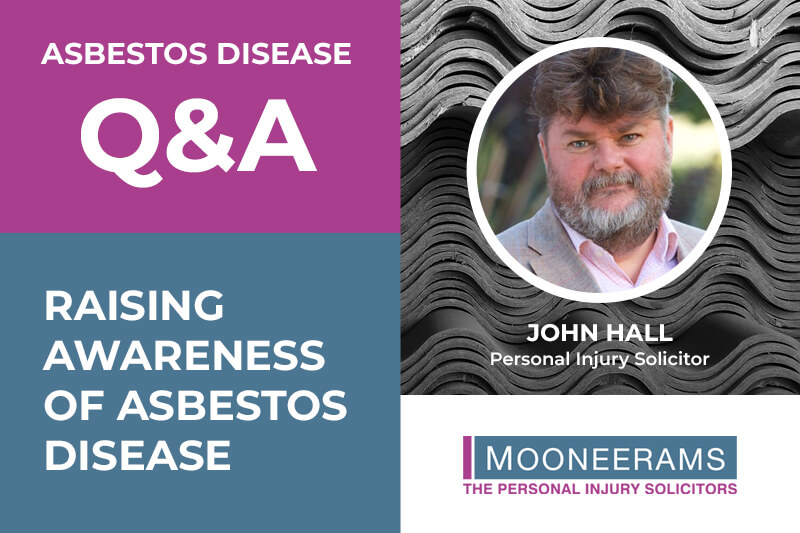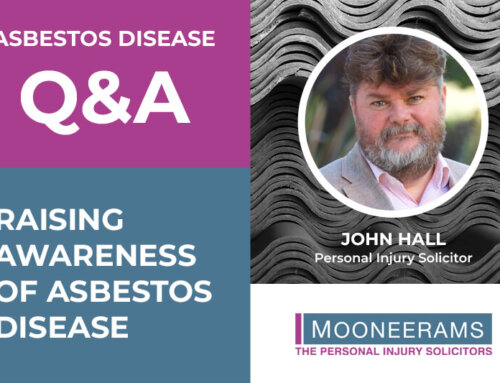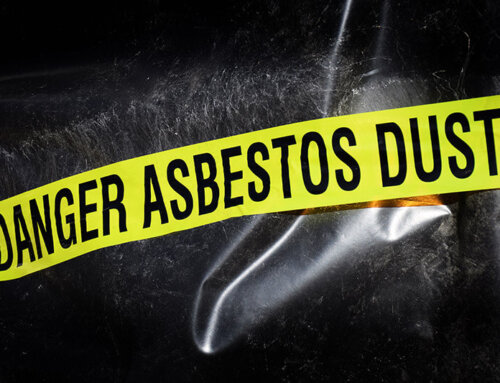Experienced asbestos disease lawyer John Hall works with Mooneerams Solicitors to act on behalf of our clients who want to bring asbestos disease claims against their former employers for exposing them to asbestos.
Some weeks ago, he kindly took time out of his busy schedule to answer a long list of questions that our clients want to know about asbestos diseases and how to bring an asbestos disease claim. This is the sixth blog in a series of seven that we were able to produce as a result of all the information John provided.
The previous blogs covered each type of asbestos disease: pleural thickening, asbestosis, asbestos lung cancer and mesothelioma (plus the benign asbestos condition called pleural plaques). We’ve also looked at why people still get asbestos disease, whether people in social housing might still be at risk of asbestos exposure and more. You can find all of these blogs by going to this link. In this blog, we asked John:
What happens if the company I worked for no longer exists?
How does an asbestos solicitor find out details of all the companies an asbestos client worked for?
Will an asbestos claim fail if the employer can’t be traced?
If you can’t trace an insurance company, will my asbestos claim fail?
Mooneerams: In earlier blogs we said that asbestos conditions are historic diseases that date back many years. For example, there will have been people working in the steel works of South Wales, with a history of asbestos disease dating back to the 1960s.
So, it’s not surprising that one of the first questions we often get asked by potential clients who phone Mooneerams looking at whether they have possible grounds for bringing an asbestos claim is this:
What happens if the company I worked for, and which was responsible for exposing me to asbestos, has subsequently closed down or disappeared? How can you claim for something that happened, for instance, in 1960?
John Hall: If that were the case, then the first thing we would look for is any evidence that shows the company has undergone a change of name, since you worked there.
We can do this on databases such as the ones on the Companies House website. There are occasions when someone worked for XYZ Ltd, as it was called at the time, but we can determine that XYZ Ltd changed its name to ABC Ltd in 1963 and it carried on trading.
If it is the same company as the one you worked for, but it simply changed its name, then from the point of view of liability flowing from XYZ Ltd to ABC Ltd, we are going to be absolutely fine. Every company that is set up has a unique company registration number, so if ABC shows as the same company number as XYZ, then the company that has that number is responsible for the historic exposure.
From 1972 onwards, companies were required by law to take out compulsory Employers Liability Insurance. From then on, The Association of British Insurers has kept a database of the insurers used by all registered companies.
The database is not as comprehensive as it perhaps could be. For instance, you do not always find the insurers for companies that have gone into liquidation. You can often find an insurer for the company that exposed you to asbestos. Then you would pursue a claim through the relevant insurer and the way it works with these asbestos diseases, is that if you are able to find the employers liability insurers with a qualifying insurance policy in force at the time you suffered asbestos exposure with XYD Ltd, they will have to deal with your claim and pay out any damages you are awarded.
So, in essence, if you can identify an insurer for the company at the relevant time, they will be responsible for compensating you for asbestos disease for the period the insurance was valid.
How do you find out all the companies your client worked for and for how long at each he worked?
To prove the period of the employment, we would obtain records from HM Revenue and Customs. From the early 1960’s when National Insurance first came into being, there has been a record of employers with details of employees and the relevant dates of employment.
By obtaining the relevant documentation from HMRC we can prove that a client was working for a particular company and over what period.
Once we have identified the company or the insurers for that company, you are going to get paid your compensation.
Sometimes, you cannot trace all the companies who exposed you to asbestos during the course of your employment with them. In the case of the divisible asbestos conditions – pleural thickening and asbestosis – where you need to find all the guilty employers to get 100% compensation, if one employer can’t’ be traced, then your claim will be reduced by the percentage of asbestos exposure the unidentified employer exposed you too.
What happens if no employer can be traced at all? Will an asbestos disease claim fail?
For mesothelioma claims where you cannot identify an employer responsible for the asbestos exposure that gave rise to the disease, there is a scheme similar to the one run by the Motor Insurers Bureau, which pays out compensation when you make a personal injury claim as a result of a motor accident caused by an uninsured driver.
A pool of money is set aside by the various insurance companies, and this is used to pay out mesothelioma victims where there is no company or insurer to claim from.
It is a fund of last resort, but broadly speaking, damages, or compensation, would be similar to what you could expect to recover if a company/insurer had been identified.
Sadly, this fund of last resort does not extend beyond mesothelioma claims, to cover other asbestos-related illnesses.
None mesothelioma cases are effectively impossible to pursue in the absence of an insurer or company.
If you can’t trace an employer or an insurance company and your client has an asbestos disease other than mesothelioma, is there anything you can do for them?
What we will always do in this instance is help people to claim the relevant state benefits. For instance, if someone has been diagnosed with asbestos-related lung cancer, there is an entitlement to industrial injuries disablement benefit and possibly a lump sum payment under the Pneumoconiosis etc. (Workers Compensation) Act 1979.
These are payments that can be made irrespective of whether a civil claim has been brought or not.
If you do bring a successful civil claim then any monies paid to you in benefits are offset against damages you recover, so you would have to pay back the equivalent of benefits made under industrial injuries disablement or Pneumoconiosis etc. (Workers Compensation) Act 1979 to the DWP.
Having access to these government benefits means for anyone who is unable to pursue a claim, there is at least some money from the state to support you. Obviously there may be other disability benefits a person is entitled to and if that is the case then the DWP will help with those claims as well. Some of those additional benefits are offset and some are not.
Again, this is another reason for having asbestos lawyers working for you. All these benefit claims can be quite complicated in terms of what has to be paid back and which benefits are claimed in addition to the compensation you recover as part of your civil asbestos claim.
Do you need the help of an experienced asbestos disease solicitor? If so, call Mooneerams, on 029 2048 3615 for confidential and without obligation to take the matter any further.
In the seventh and final blog in this asbestos-related disease Q&A blog series, John answers questions such as, whether we are anywhere near finding a cure for asbestos disease, whether we are close to making the UK entirely asbestos free, what the average day in the life of an asbestos disease solicitor is like and more.
Read more in our Asbestos Disease Q&A series:




